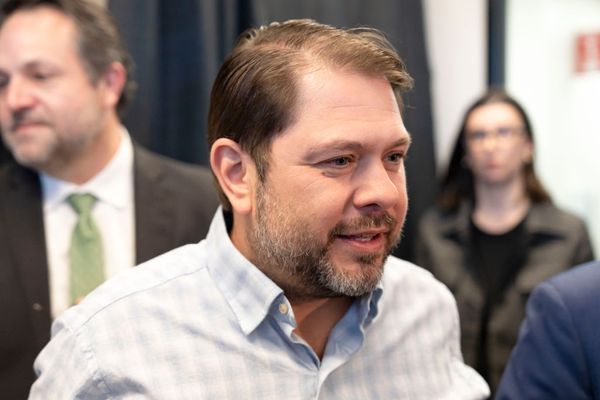
Tate Modern’s new exhibition is an ambitious attempt to explore the relationship between the visual art mediums
There is “a lot going on” in Tate Modern’s new exhibition, said Laura Freeman in The Times. Subtitled “A journey through painting and photography”, the show is a huge and ambitious attempt to explore the relationship between painting and photography from the early 20th century to the present day, examining how a diverse range of artists have sought to capture “a fleeting moment with the click of a shutter or the flick of a brush”. It features “painting from photographs and photographs of paintings, photographs collaged on to paintings and photographs that are as staged as paintings”. Yet while it poses some “interesting questions” and includes a number of “fabulous pictures” by the likes of Lucian Freud, Andy Warhol and Gerhard Richter, it also features a lot of “second-rate” works and offers scant analysis. Ultimately, “it’s diffuse, it’s difficult and it doesn’t really hang together”.
- SEE MORE China’s hidden century review: an ‘enthralling’ show at the British Museum
- SEE MORE Royal Academy Summer Exhibition 2023 review
The focus of the show is certainly “blurry”, said Ben Luke in the Evening Standard. This can perhaps be explained by the fact that it consists entirely of works from a private collection founded by a Taiwanese electronics billionaire mixed in with selections from the Tate’s own holdings. Nevertheless, it compensates with some “stonkingly great” pictures. One room pairs “Migrant Mother”, Dorothea Lange’s “defining” 1936 photograph of Depression-era poverty, with a “devastating” Picasso portrait painted the following year in response to the Spanish Civil War. In another, we see what is arguably David Hockney’s “best painting”: “Portrait of an Artist (Pool with Two Figures)”, a work inspired by two unrelated photographs Hockney found on his studio floor. The juxtaposition of images prompted the artist to create this ingenious work depicting his lover, Peter Schlesinger, staring down at a bather in a swimming pool full of “stylised ripples” against a background of “verdant” hills.
In the first few rooms, it is just about possible to follow the curators’ intent, said Francesca Peacock in The Daily Telegraph. As photography became “commonplace”, painters made aesthetic shifts: in place of creating the kind of “lifelike portraits” that could now be captured by photographers, artists such as Picasso and Francis Bacon adopted other “visual languages” to reinvigorate their medium. Later, artists would play with and manipulate photographs. Paula Rego’s “War” (2003), for example, takes an image of the Iraq conflict and gives the figures in it “rabbit heads”. Or there’s Jeff Wall’s “painstakingly staged” 1993 picture “A Sudden Gust of Wind”, a modern recreation of a Hokusai woodcut. It’s a work no more “true” than “a portrait painted over months of sittings”. But thereafter the show becomes directionless and baggy. You can’t help feeling that “there is the shadow of a brilliant exhibition here” that the Tate has “failed to capture”.
Tate Modern, London SE1 (020-7887 8888, tate.org.uk). Until 28 January 2024







